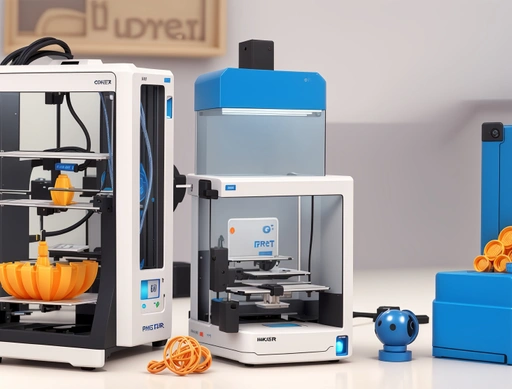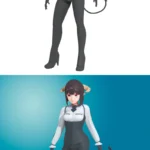How to Choose the Right 3D Printer for Your Needs
How to Choose the Right 3D Printer for Your Needs
When diving into the world of 3D printing, selecting the right 3D printer is crucial to achieving your goals. With a variety of models, features, and price ranges available, understanding your needs and the technical aspects of 3D printers can help you make an informed decision. Whether you’re a beginner or an experienced user, this guide will walk you through the key factors to consider when choosing the perfect 3D printer for your specific requirements.
1. Define Your Purpose
The first step in choosing a 3D printer is understanding what you plan to do with it. Your intended use will significantly influence the type of printer you should buy.
Hobbyists and Makers: If you plan on using 3D printing for DIY projects, model making, or creating small gadgets, a budget-friendly 3D printer with a decent build volume should suffice.
Professionals and Engineers: For creating prototypes, engineering parts, or design models, you’ll need a high-precision printer with support for advanced materials.
Educational Use: If you’re teaching with 3D printers in a school or university, look for models that are easy to use and safe for students.
Small Businesses: Entrepreneurs looking to leverage 3D printing for product development or custom products should prioritize print quality, material compatibility, and scalability.
2. Consider Your Budget
3D printers come in a wide range of prices, from under $200 for entry-level models to thousands of dollars for industrial-grade machines. It’s important to set a budget based on your needs:
Entry-Level (Under $500): These budget 3D printers are ideal for beginners or hobbyists. They typically offer good print quality but may lack advanced features.
Mid-Range ($500–$2,000): These printers often have larger build volumes, better precision, and support for a wider variety of materials, making them suitable for professionals or advanced hobbyists.
High-End ($2,000 and above): Industrial 3D printers offer top-tier performance, superior print resolution, and support for high-strength materials like metals and composites. They are used in manufacturing, medical applications, and other demanding fields.
3. Printing Technology
There are several 3D printing technologies, and the right one for you depends on the type of models or parts you want to create. The most common types include:
Fused Deposition Modeling (FDM): The most popular and affordable technology, FDM 3D printers work by extruding melted filament through a nozzle layer by layer. Ideal for beginners and general-purpose printing, they support materials like PLA, ABS, and PETG.
Stereolithography (SLA): SLA 3D printers use a liquid resin that is cured by a UV laser to create highly detailed and smooth parts. These printers are perfect for jewelry, dentistry, and high-resolution models.
Selective Laser Sintering (SLS): SLS printers use a laser to fuse powdered materials, such as nylon or metal, into solid objects. These printers are mainly used in industrial applications for functional prototypes and end-use parts.
4. Print Resolution and Quality
Print resolution refers to the level of detail a 3D printer can achieve. It is measured in microns, with a lower number indicating finer detail. If you require high precision for intricate models, jewelry, or engineering parts, consider a printer with high resolution, such as an SLA or SLS printer.
For general-purpose printing, an FDM printer with a resolution of around 100 microns is often sufficient. However, if you want smoother finishes and more detailed parts, look for models that offer finer resolutions (e.g., 50 microns).
5. Build Volume
The build volume of a 3D printer determines the maximum size of the objects you can print. If you’re planning to create larger models or parts, choose a printer with a bigger build volume.
Small Build Volume (Up to 150 mm): Ideal for hobbyists or educational projects that don’t require large prints.
Medium Build Volume (150–300 mm): Suitable for more complex projects, including functional prototypes and medium-sized models.
Large Build Volume (300 mm and above): For large-scale projects, including architectural models, furniture pieces, or industrial parts, you’ll need a printer with a large build volume.
6. Material Compatibility
3D printers support a variety of materials, from basic plastics to advanced composites and metals. Depending on your project, you’ll want to ensure your printer is compatible with the materials you intend to use.
Standard Filaments: PLA, ABS, and PETG are common in FDM printers and are easy to work with, making them great for beginners.
Flexible and High-Strength Filaments: Materials like TPU (flexible) and Nylon (durable) require a printer with a heated bed and higher temperature settings.
Resin: Used in SLA printers, resin provides superior surface finish and is ideal for jewelry, dental models, and miniatures.
Metals and Composites: SLS and high-end FDM printers support metal powders and carbon-fiber reinforced filaments, useful for engineering applications.
7. Ease of Use and Software
For beginners, ease of use is a crucial factor when choosing a 3D printer. Look for features like:
Auto-leveling: Simplifies bed leveling, reducing print errors.
Touchscreen interface: Makes navigation easier.
Wi-Fi connectivity: Allows you to monitor prints remotely.
User-friendly software: Many 3D printers come with their own slicing software that translates your 3D models into printable files. Ensure the software is easy to use and compatible with popular 3D modeling programs.
8. Support and Community
Choose a 3D printer from a reputable brand that offers good customer support and has an active online community. This can be invaluable when you encounter issues or need guidance.
9. Maintenance Requirements
Some 3D printers require regular maintenance, such as cleaning the nozzle or replacing parts. Consider how much time and effort you’re willing to invest in keeping your printer in good working condition. FDM printers tend to require more maintenance compared to SLA or SLS printers.
Conclusion
Selecting the right 3D printer comes down to understanding your needs, budget, and the technical features that matter most to you. Whether you’re a beginner looking for a budget-friendly machine or a professional in need of high precision and material versatility, there’s a 3D printer that can meet your requirements. By considering factors like print quality, build volume, and material compatibility, you can make an informed choice that will serve you well as you explore the possibilities of 3D printing.



